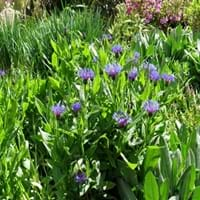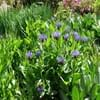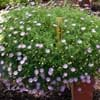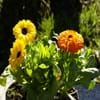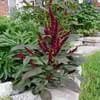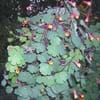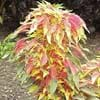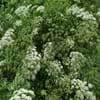What is
Life Span
Annual and Perennial
Perennial
Type
Flowering Plants, Shrubs
Tree
Origin
World/Pandemic, North America, Europe, Russia/Siberia, China, Korea
Australia
Types
Bigleaf hydrangea, Hortensia, Smooth hydrangea, Oakleaf hydrangea, Annabelle
Not Available
Number of Varieties
100
99+
Not Available
Habitat
Forest edges, Hillside, Woods
Scrubs, tussock grasslands, Upland savannas
USDA Hardiness Zone
2-11
10-11
AHS Heat Zone
7 - 1
12-10
Sunset Zone
Not Available
8, 9, 12, 13, 14, 15, 16, 17, 18, 19, 20, 21, 22, 23, 24
Habit
Upright/Erect
Upright/Erect
Information
Plant Size
Minimum Height
30.00 cm
99+
550.00 cm
99+
Minimum Width
30.00 cm
99+
370.00 cm
99+
Plant Color
Flower Color
Blue, Sky Blue, Indigo, Dark Blue
Lemon yellow
Flower Color Modifier
Bicolor
Bicolor
Fruit Color
Brown, Sandy Brown
Gray Green
Leaf Color in Spring
Sea Green, Gray Green
Blue Green
Leaf Color in Summer
Sea Green, Gray Green
Blue Green
Leaf Color in Fall
Sea Green, Gray Green
Blue Green
Leaf Color in Winter
Light Green
Blue Green
Shape
Leaf Shape
Oblovate
Long Narrow
Thorns
No
No
Season
Plant Season
Spring, Summer, Fall
Spring
Growing Conditions
Sunlight
Full Sun, Partial Sun
Full Sun
Growth Rate
Very Fast
Slow
Type of Soil
Loam, Sand
Loam, Sand
The pH of Soil
Acidic, Neutral, Alkaline
Acidic, Neutral, Alkaline
Soil Drainage
Well drained
Well drained
Bloom Time
Indeterminate
Spring, Late Winter
Repeat Bloomer
Yes
No
Tolerances
Drought
Drought
Care
Where to Plant?
Container, Ground, Pot
Ground
How to Plant?
Seedlings
Seedlings
Plant Maintenance
Medium
Medium
Watering Plants
Watering Requirements
Keep ground moist, Requires a lot of watering, Requires regular watering, Requires watering in the growing season
Do not water excessively
In Summer
Lots of watering
Lots of watering
In Spring
Moderate
Moderate
In Winter
Average Water
Average Water
Soil
Soil pH
Slightly Acidic
Acidic, Neutral, Alkaline
Soil Type
Loamy
Loam, Sand
Soil Drainage Capacity
Loamy
Well drained
Sun Exposure
Full Sun
Full Sun
Pruning
Prune to control growth, Remove damaged leaves, Remove dead branches, Remove dead leaves
Remove dead or diseased plant parts, Requires little pruning
Fertilizers
Compost
All-Purpose Liquid Fertilizer, No fertilizers needed
Pests and Diseases
Bacterial leaf spot, Botrytis Blight, Leafminers, Mealybugs, Mushroom root rot
Insects, Root rot
Plant Tolerance
Drought
Drought
Facts
Flowers
Showy
Showy
Flower Petal Number
Single
Single
Fruits
Showy Fruit
No
No
Edible Fruit
No
No
Fragrance
Fragrant Flower
Yes
Yes
Fragrant Fruit
No
No
Fragrant Leaf
No
No
Fragrant Bark/Stem
No
No
Showy Foliage
No
No
Showy Bark
No
No
Foliage Texture
Medium
Fine
Foliage Sheen
Matte
Matte
Evergreen
No
No
Invasive
Sometimes
No
Self-Sowing
Yes
Yes
Attracts
Butterflies
Butterflies
Allergy
Chest tightness, Diarrhea, Dizziness, Nausea, Vomiting
Asthma, Eye irritation, Headache, Nose Irritation, Throat itching, Vomiting
Benefits
Uses
Aesthetic Uses
Beautification, Bouquets, Landscape Designing, Showy Purposes
Showy Purposes
Beauty Benefits
Not Available
Not Available
Edible Uses
Yes
Yes
Environmental Uses
Air purification, Food for insects, Indoor Air Purification, Prevent Soil Erosion, Very little waste
Air purification, soil stabilisation
Plant Benefits
Medicinal Uses
Fever, Kidney problems, Urinary tract problems
Not Available
Part of Plant Used
Flowers, Root
Flowers, Sap, Seeds
Other Uses
Can be made into a herbal tea, Decoration Purposes, Employed in herbal medicine, Showy Purposes, Used as Ornamental plant, Used for its medicinal properties
Used as a dye, Wood is used fore making tools
Used As Indoor Plant
Yes
No
Used As Outdoor Plant
Yes
Yes
Garden Design
Container, Herb
Shade Trees, Street Trees
Scientific Name
Botanical Name
CENTAUREA cyanus
ACACIA aneura
Common Name
Batchelor's Buttons, Cornflower
Mulga, True Mulga
In Hindi
Hydrangea
Mulga
In German
Hortensie
Mulga
In French
Hortensia
Mulga
In Spanish
Hortensia
Mulga
In Greek
υδραγεία
mulga
In Portuguese
Hortênsia
Mulga
In Polish
Hortensja
Mulga
In Latin
Hibiscus
Mulga
Classification
Kingdom
Plantae
Plantae
Phylum
Anthophyta
Magnoliophyta
Class
Magnoliopsida
Magnoliopsida
Order
Asterales
Fabales
Family
Asteraceae
Fabaceae
Genus
Centaurea
Acacia
Clade
Angiosperms, Asterids, Eudicots
Angiosperms, Eudicots, Rosids
Tribe
Cynareae
Not Available
Subfamily
Carduoideae
Not Available
Number of Species
Not Available
Not Available
|
||
|
||
|
